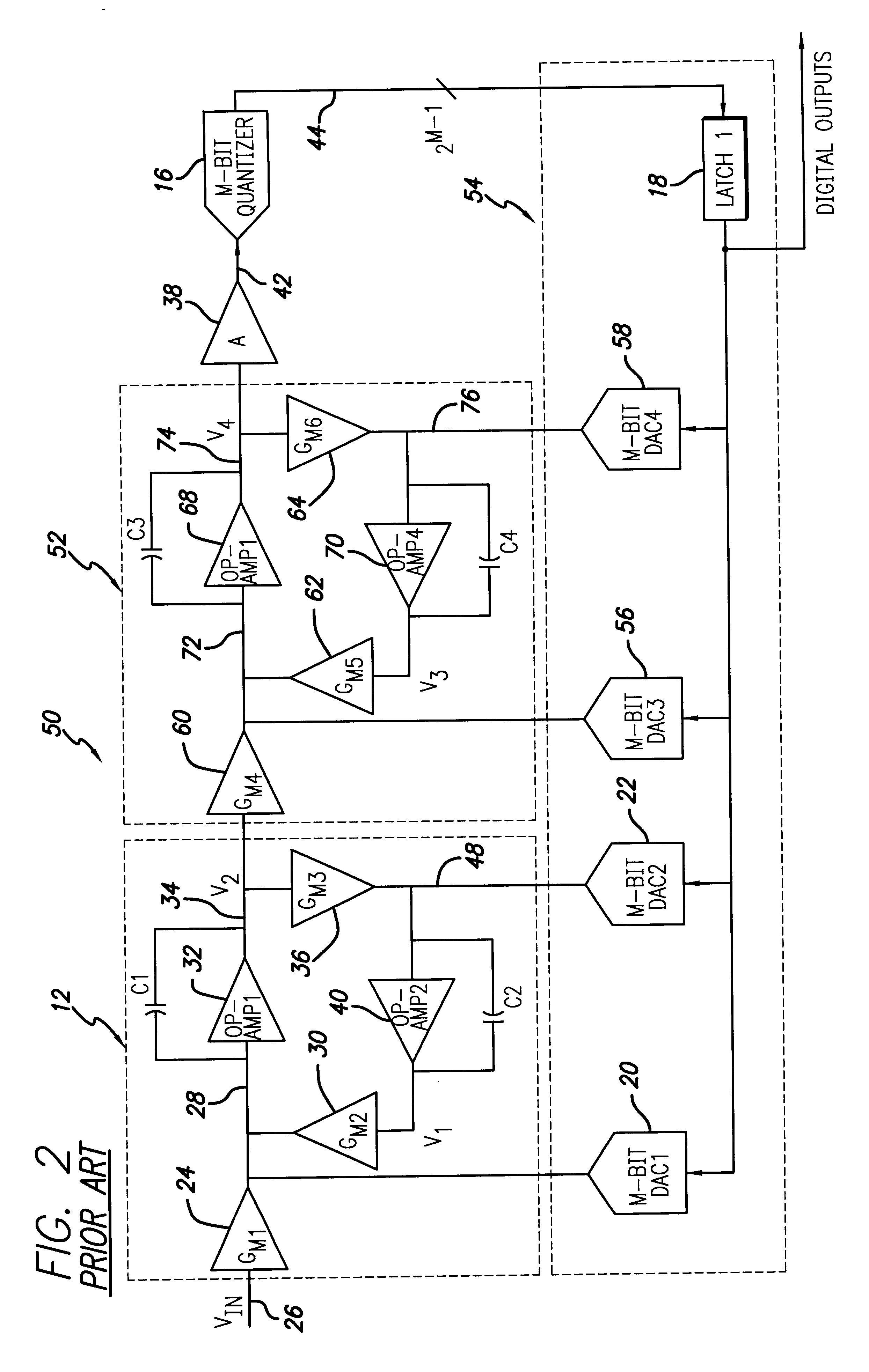Excess delay compensation in a delta sigma modulator analog-to-digital converter
a delta sigma modulator and analog-to-digital converter technology, applied in digital-analog converters, transmission systems, instruments, etc., can solve the problems of granular noise, distortion, and quantization noise in the output digital signal, and achieve the effect of reducing the noise of overload
- Summary
- Abstract
- Description
- Claims
- Application Information
AI Technical Summary
Problems solved by technology
Method used
Image
Examples
Embodiment Construction
While the present invention is described herein with reference to illustrative embodiments for particular applications, it should be understood that the invention is not limited thereto. Those having ordinary skill in the art and access to the teachings provided herein will recognize additional modifications, applications, and embodiments within the scope thereof and additional fields in which the present invention would be of significant utility.
FIG. 1 is a diagram of a conventional second order .DELTA..SIGMA. ADC 10. The .DELTA..SIGMA. ADC includes a resonator stage 12 (bandpass loop filter) and an m-bit quantizer feedback-DAC path 14 from the output of an m-bit quantizer 16 back to the resonator stage 12. The feedback path 14 includes a first latch 18, which is connected at an output of the m-bit quantizer 16. An output of the first latch 18 is connected to an input of a first m-bit digital-to-analog converter (DAC) 20 and to an input of a second DAC 22.
The resonator stage 12 inc...
PUM
 Login to View More
Login to View More Abstract
Description
Claims
Application Information
 Login to View More
Login to View More - R&D
- Intellectual Property
- Life Sciences
- Materials
- Tech Scout
- Unparalleled Data Quality
- Higher Quality Content
- 60% Fewer Hallucinations
Browse by: Latest US Patents, China's latest patents, Technical Efficacy Thesaurus, Application Domain, Technology Topic, Popular Technical Reports.
© 2025 PatSnap. All rights reserved.Legal|Privacy policy|Modern Slavery Act Transparency Statement|Sitemap|About US| Contact US: help@patsnap.com



